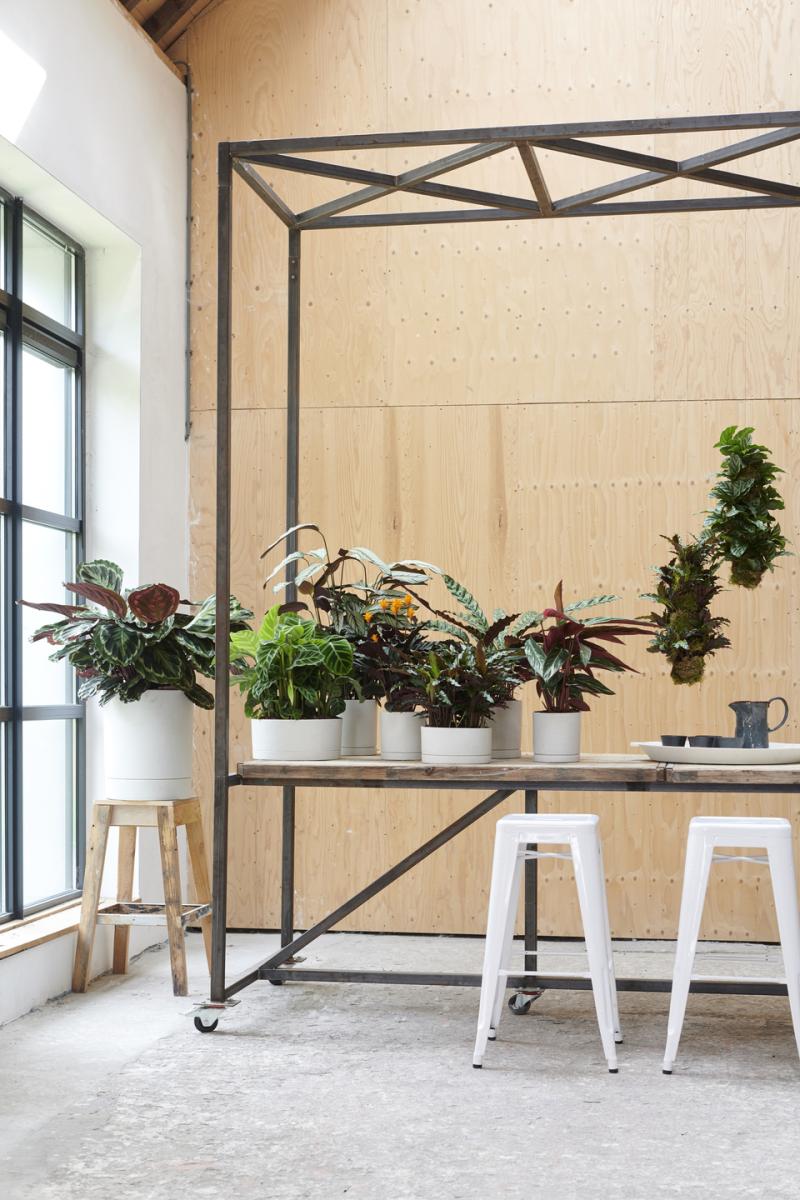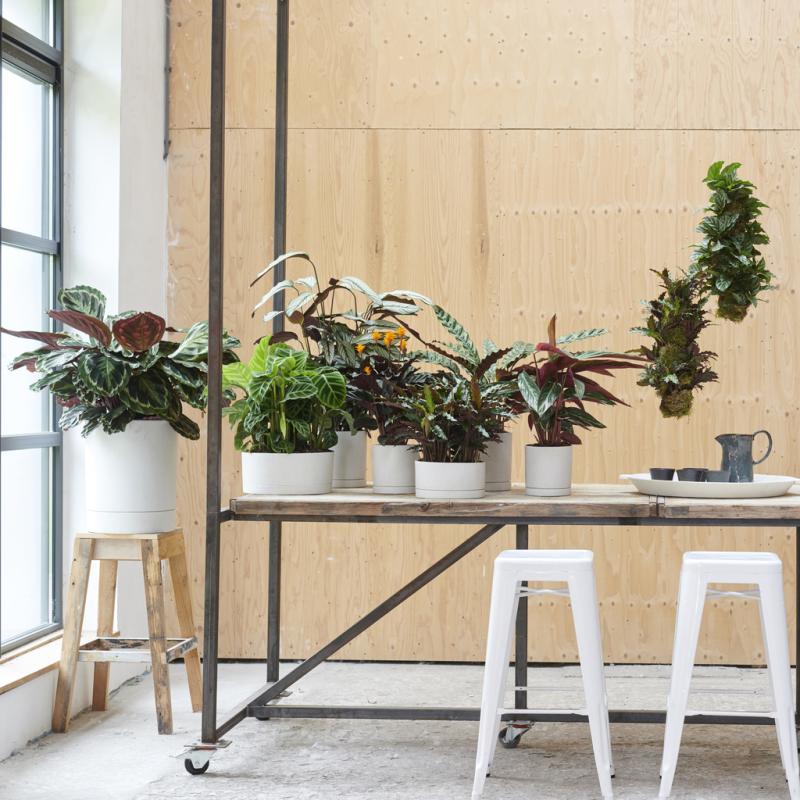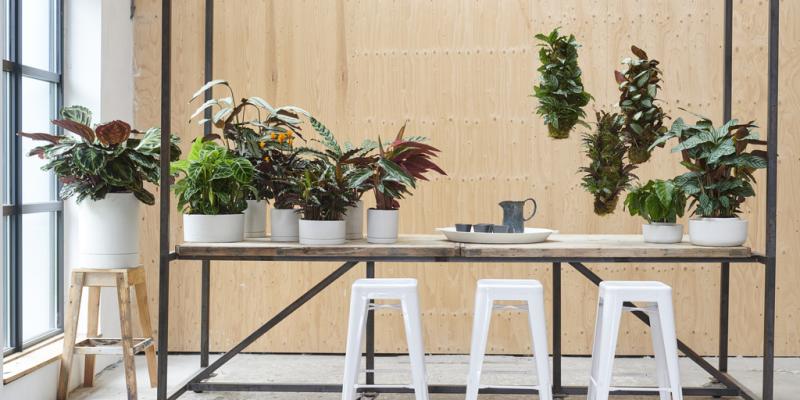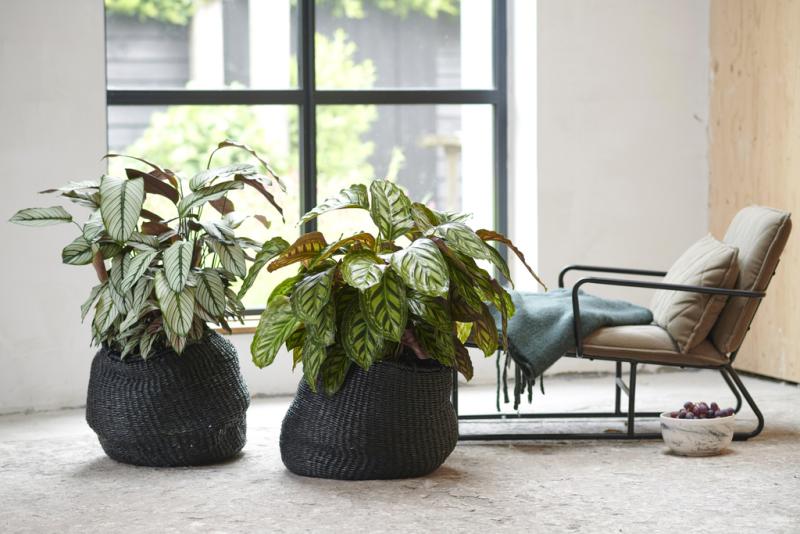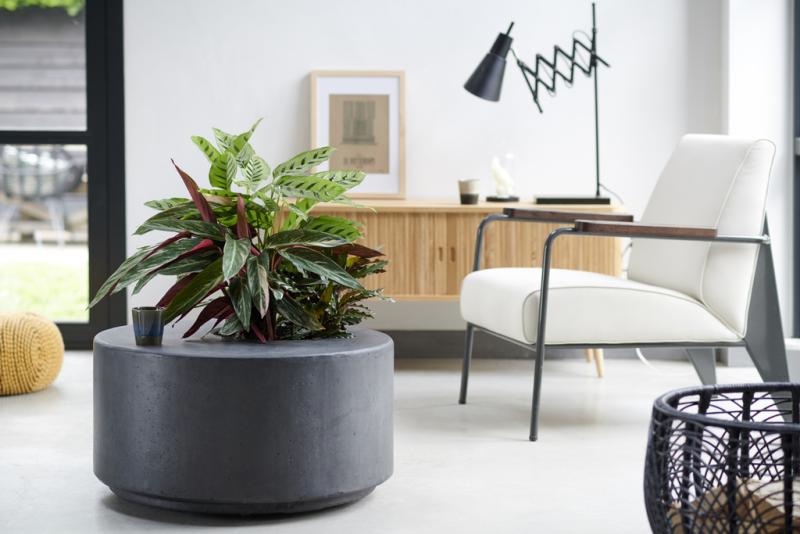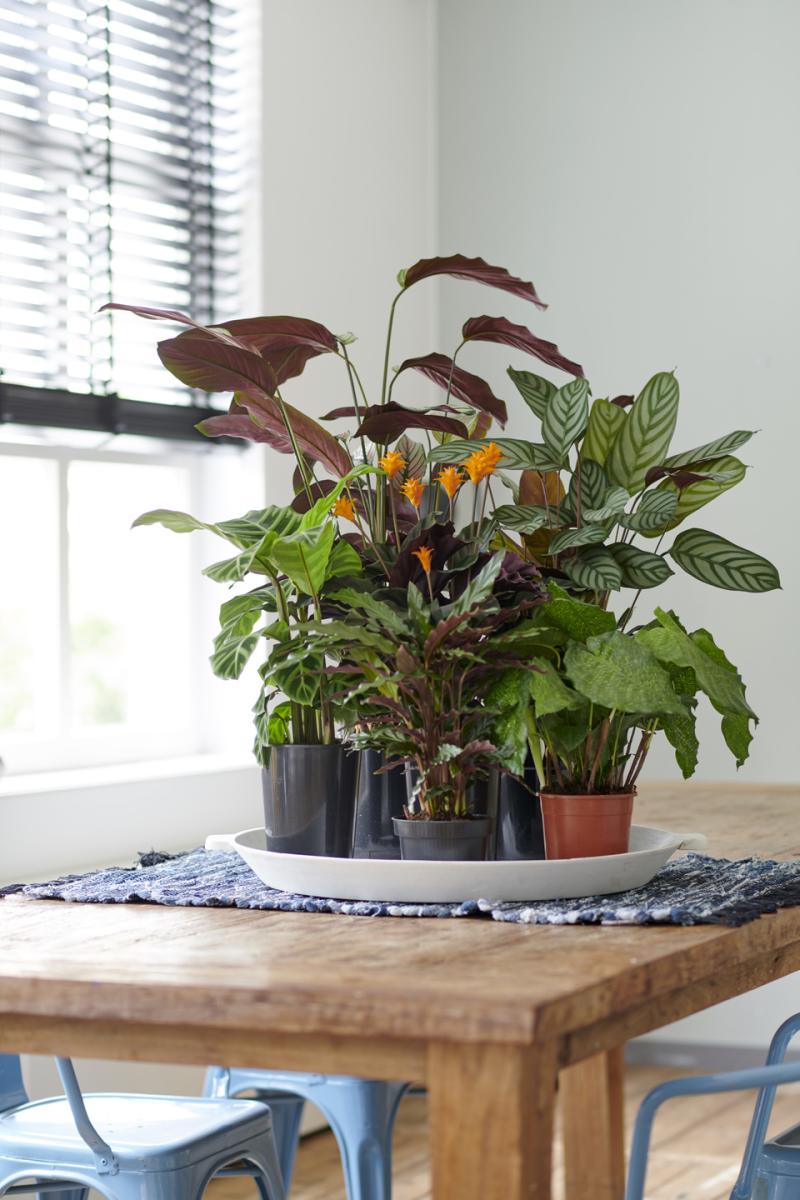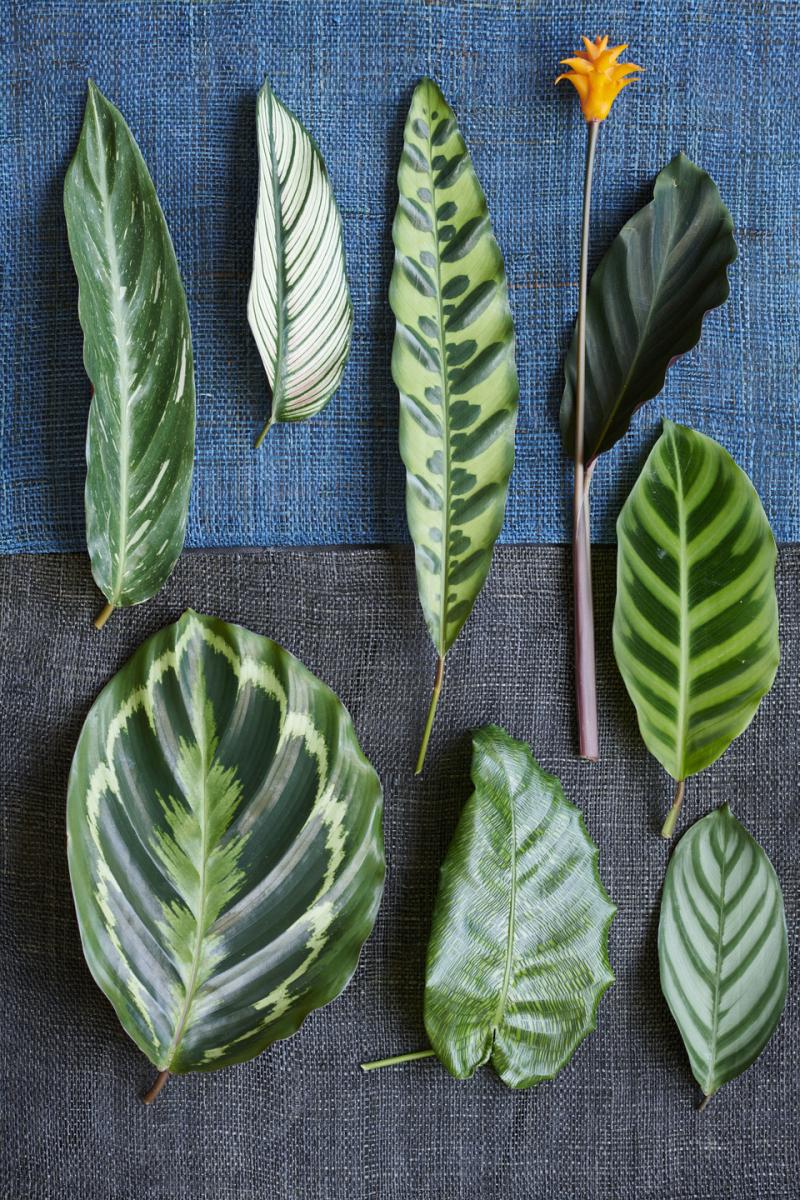Calathea: November Houseplant of the Month
The story of Calathea
Calathea is characterised by the fabulous markings on the leaves and the rich choice of leaf shapes, from round and oval to spear-shaped. Those leaves not only have air-purifying properties, but also join in your daily routine thanks to their day and night rhythm. There is a kind of joint between the leaf and the stem that allows movement. When it gets dark the leaves close, and if it’s quiet enough you can hear the rustling of the closing leaves. When it gets light they unfold again.
Origin
Calathea grows in tropical rainforests in warm and damp conditions. It particularly thrives there in sheltered spots without too much light, around forest giants that filter the light.
Calathea assortment
There are many different Calatheas. There are a few species that are sold as flowering plants, of which C. crocata - with orange flowers - is the best-known with cultivars such as Tassmania and Candela. Other flowering Calatheas are C. warscewiczii (white) and C. ‘Bicajoux’ (pink). The other Calatheas are stunning decorative foliage plants with unusual leaf markings and colours. Many species feature a claret-coloured back to the leaf. C. lancifolia and C. makoyana have been known for a long time; more recent varieties are C. rufibarba, C. zebrina and C. orbifolia. Calathea is available in sizes ranging from small compact plant to potted giant.
What to look for when buying Calathea
- The plant’s pot size, thickness and height must be in proportion. The species or cultivar name indicates what leaf markings/colour the plant has.
- With the flowering species check the ripeness and the number of flowers per plant.
- Calathea must be free of pests and diseases. Soil that is too wet can lead to root rot. Brown spots and leaf edges are often caused by insufficient humidity and/or the potting soil being too dry.
- Look out for cold damage or leaf scorch. At temperatures below 12°C it’s a good idea to place the plants in sleeves for shipping. Cold can cause spots on the leaves or even cause the entire plant to collapse.
Care tips for customers
- Wrap carefully at the time of purchase: Calathea cannot cope with cold.
- Calathea likes a light and warm spot indoors; do not allow the temperature to drop below 12°C.
- The more variegated the leaves, the more light is required, although it’s better to avoid bright sunlight. If the plant’s position is too dark the markings will disappear.
- The soil should always be slightly damp. Preferably give the plant water at room temperature.
- Possibly spray the plant (or place it outdoors in a rain shower in the summer) in order to increase the humidity to prevent dry leaf edges and tips.
- Some plant food once a month keeps the leaves looking good and the plant growing.
- Yellow or brown leaves can be cut off.
Sales and display tips
Calathea’s air-purifying effect makes it a great plant for both the office and the home now that the central heating is on again. Do not place the plants too close together, so that the attractive foliage is displayed clearly. The styling can be trendy and sleek - that shows off the leaves particularly well.
Calathea images
You can download and use the images below free of charge if you credit Thejoyofplants.co.uk.
Instagram: @thejoyofplants
Facebook: @thejoyofplants
Twitter: @thejoyofplants
For more information about the 2019 Houseplants of the Month selection, click here.
Calathea posters
You can download the poster using the link below:

